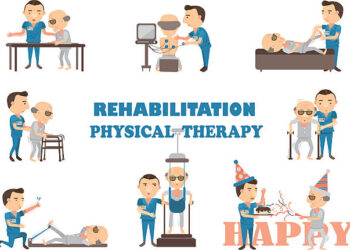Functional restoration is a rehabilitation measure aimed at recovering functions that have been reduced or lost due to injuries, accidents, strokes, brain damage, etc. This process is often conducted concurrently with preventive and curative measures to achieve the highest therapeutic outcomes, helping patients quickly regain good health and robust musculoskeletal systems.
1. What is Functional Restoration?
Functional restoration is one of the three commonly used terms in the medical field, including preventive care, medical treatment, and functional restoration. It is a specialized field in medicine that involves researching and applying various measures to alleviate or restore the pathological conditions of certain organs or systems after treatment.
Typically, when afflicted by illness or injury, individuals often think about swift treatment and avoiding dangers. However, they may overlook the importance of maintaining long-term health, stability, reintegrating into life, living productively, and participating in various social activities.
Therefore, functional restoration becomes a measure to improve and restore the affected parts, aiming to regain effective functionality, minimize the risk of disease recurrence after treatment, and support preventive care to avoid paralysis or disability.
In simple terms, functional restoration is a broad field that combines various approaches from medical to social sciences, psychology, economics, education, career counseling, communication, etc., to restore damaged parts and help patients maintain good health, live happily, and contribute meaningfully to society.

2. Objectives of Functional Restoration
Functional restoration should be implemented in conjunction with preventive care and medical treatment, employing one or several different methods such as physical therapy, assistive devices, creating psychological comfort for patients, improving living and activity environments, selecting suitable jobs, etc. The main objectives of this approach are:
- Effectively support patients in restoring the functions of organs or parts affected during and after treatment or surgery.
- Assist patients in adapting well to their living environment, living independently without relying on others, and not becoming a burden to their families and society.
- Prevent and combat disease recurrence after treatment, maintain long-term health and stability, live happily with family and those around them.
- Positively impact patients’ thoughts, helping them have a better perspective on society, maintain a relaxed and comfortable mental state, and minimize signs of stress and tension in work and life.
3. Diseases Requiring Functional Restoration
Functional restoration is a process typically applied to individuals with psychological issues, spinal cord and musculoskeletal injuries, disabilities, etc. Specific cases include:
- Patients with mild and moderate disc herniation, misalignment, joint dislocation, lower back pain, spinal inflammation not affecting the joints, spinal deformities, etc., can use a Decompression Traction System (DTS) to support treatment and functional restoration.
- Individuals experiencing joint pain, inflammation, muscle tension, carpal tunnel syndrome, etc., after sports or heavy physical labor, or due to injury, can use Laser therapy for treatment. Other pain relief methods such as infrared radiation (IR), electrical stimulation, pulsed wave therapy, etc., can also be applied based on specific cases.
- Those with joint degeneration, osteoarthritis pain due to old age or injury, can also apply pain relief methods for treatment and functional restoration.
- Children with symptoms such as delayed speech, stuttering, autism, developmental delays, toe walking, etc., can undergo physical therapy to restore functionality.
- Patients needing functional restoration after surgeries like brain trauma, knee ligament replacement, joint replacement, spinal nerve surgery, etc.
- Individuals with psychological disorders, work-related stress, depression, autism, etc., can also apply functional restoration measures for a more relaxed and enjoyable mental state.
4. Forms of Functional Restoration
In practice, there are three main forms of functional restoration: carried out in clinics, at home, and within the community. Each location often involves different implementation methods, but typically a combination of various approaches is used to achieve the highest effectiveness.
- Physical Therapy: The goal is to help the affected organs or parts recover functionality by applying techniques that reduce pain, prevent swelling, and stimulate the body’s natural recovery process.
- Movement Therapy: An essential method in the process of preventive care, treatment, and functional restoration. Physicians assist patients in performing movement exercises, manually adjusting joints, or using specialized machines to restore the activity of muscles, bones, and joints, avoiding paralysis and disability.
- Psychological Therapy: This approach helps patients eliminate negative thoughts, regain relaxation, comfort, clear-headedness, and work more effectively. This contributes to a higher success rate in the functional restoration process.
- Activity Therapy: This method aims to support and help patients restore good health, self-care ability, find suitable jobs, and actively participate in sports activities beneficial to health, preventing disease recurrence. This can be implemented at home or in the community.
- Language Therapy: This approach helps patients (children, those with post-stroke complications) speak clearly if they experience slow speech or stuttering. In some cases, support for writing or using hands to perform sign language (for individuals with speech and hearing impairments) may be provided to restore communication abilities that have been lost.
Functional restoration is a comprehensive process that contributes significantly to the prevention, treatment, and recovery of various health issues, emphasizing the importance of maintaining long-term health, independence, and active participation in society.
Cre: vinmec






















Discussion about this post